What can you make from a Harbor Freight #2 pipe cutter and a 1.5 inch grade 8 bolt?

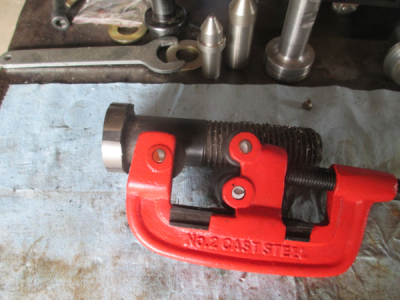
Well........ in this case a rotary swaging tool. I need to anchor a 1.25 OD slug into a piece of 1.5 OD x 0.125 wall aluminum tubing. For a couple reasons I can't pin it and I don't trust gluing it in for this application, welding takes too much time in production.. So swaging seems like a good and quick solution.
So first replace the cutter wheel with a roundover wheel.
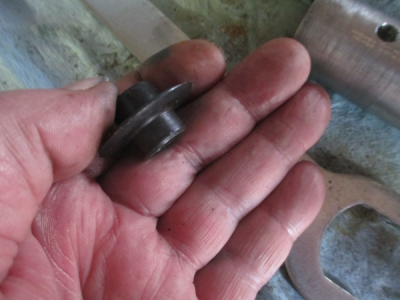
This is where the 1.5 inch bolt comes in. Needed a piece of reasonably hard steel and I had that bolt kicking around. Needs to be 1.375 dia, so turn down the bolt and create the .125 radius profile. A carbide router roundover bit works well for this.
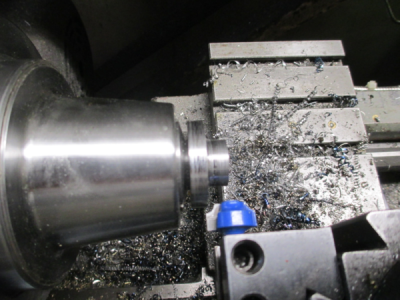
Then drill and ream 0.376 for the new pin. Drill & ream the pipe cutter frame at 0.3745 to get a good press fit on the 0.375 dowel pin
Lining up the on original hole as best I can with with a drill bit that was a snug fit in the hole.
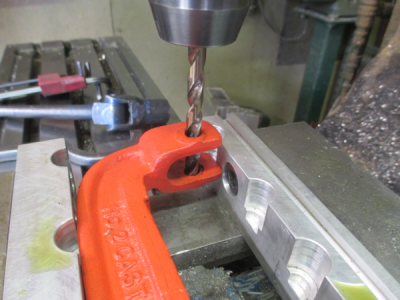
And the new wheel installed
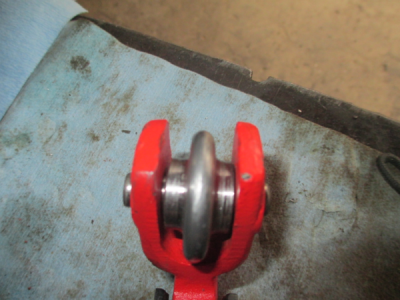
First cut a radius on the slug, then mark the location on the tube.
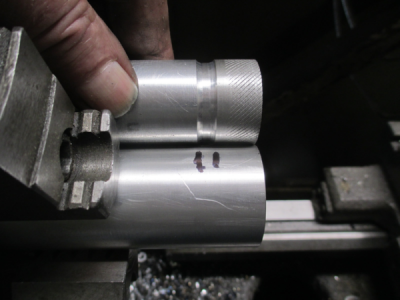
Turn on the lathe at 70 RPM, and crank on the handle.
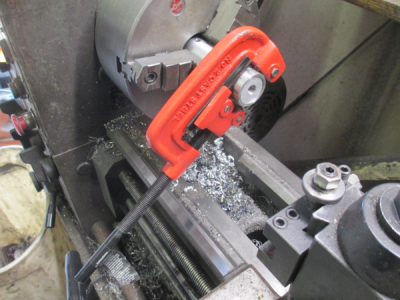
And the swaged test part completed. Went a bit too deep on this one, but still learning how to use the tool.

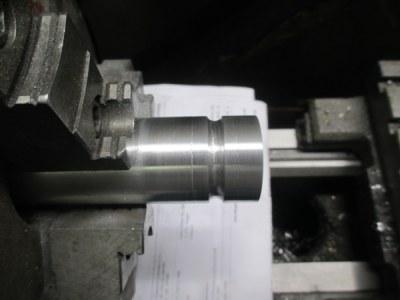
So now it's time for a little destructive testing. Took 10 tons to press the slug out of the tube. In use, the maximum load on the swaged joint might be as much as about 200 lbs. I'll do a double swage on the production parts just for redundant redundancy.

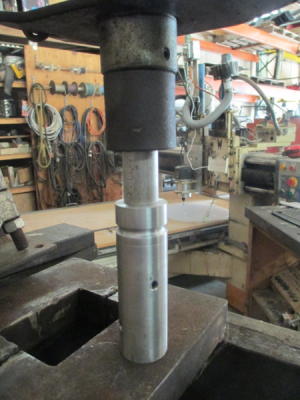
And this is how it looks after pressing out. Sheared the swaged over area inside the tube. Looks like the radius in the slug needs to be a bit wider. Need to do a few more test parts to determine the best combination and get a good fit up.
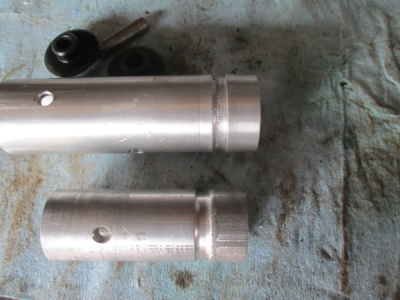
Over all it looks like a success













